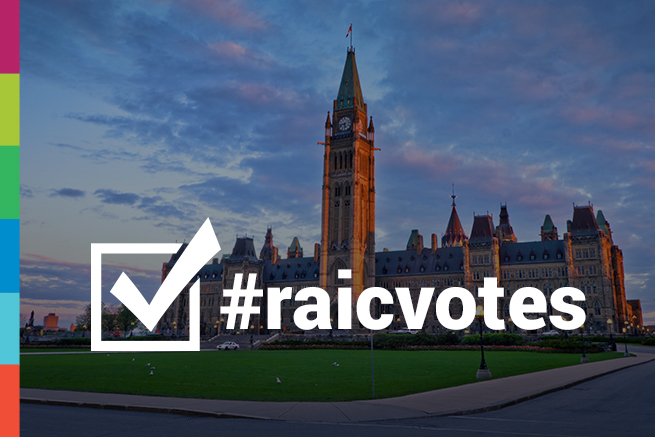
OTTAWA, September 25, 2019 — The Royal Architectural Institute of Canada (RAIC) has sent the political parties an issues brief and four questions on sustainability and resilience, a National Architecture Policy, First Nations communities, and procurement.
During the 2019 election campaign, the RAIC seeks to engage political candidates, along with the public, in a discussion about the importance of architecture and urban design in shaping a successful future for Canada. The responses from the parties will be published online and shared with RAIC members.
The federal government is Canada’s single largest owner of buildings and land. It has a central role in setting the highest standards of excellence and environmental sustainability to maximize the benefits to Canadians, achieve value for money, and position Canada as an international leader. Buildings and infrastructure that are sustainable, healthy, attractive, and durable represent a smart investment in Canada’s prosperity and liveability.
1. Sustainability and resilience
Buildings are major producers of carbon, so their design and construction offer significant opportunities to reduce emissions and combat climate change.
According to the International Panel on Climate Change (IPCC) Special Report, bold action over the next 12 years is needed to limit global heating to 1.5°C—the threshold necessary to mitigate the most disastrous effects. That means building emissions need to be reduced by 80-to-90% by 2050 and new construction will need to be near-zero energy and free of fossil fuels as soon as 2020.
Designing buildings to be sustainable, resilient, and resource-efficient – and developing Canadian expertise in this growth industry – is not only good for the environment but also the economy.
Question: What is your strategy to address climate change and holistic health through Government of Canada buildings and projects? How would you harness the capacity of Canadian architects and others working in design, construction, and procurement of the built environment (public and private sectors) to address climate change?
2. National Architecture Policy
Well-designed environments enhance health, quality of life, and economic and social well-being. More than 30 countries have adopted or are developing a national architecture policy. Canada’s architecture community is currently working on a draft national architecture policy as a guide to excellence in design, construction, and sustainable development. A national architecture policy for Canada can inform public debate and influence legislation. It can inspire Canadians to create meaningful and resilient communities amid climate change, rapid urbanization, threatened heritage, and other 21st-century challenges.
Question: Do you support a national architecture policy, and how would your party work with professionals and industry leaders to improve the quality of Canada’s buildings, infrastructure, and cities?
3. First Nations
The federal government exercises great control over the design and construction of First Nations communities on reserves. The housing and infrastructure of some settlements have been compared to the poorest in the world. Potable water and indoor plumbing are often lacking.
Giving agency to Indigenous people to plan, design, and develop their communities is a step toward reconciliation. Successful First Nations projects in Canada address culture, heritage, economic sustainability, and environmental conservation. They demonstrate the transformative impact of involving Indigenous architects and designers and including the local community in the design process.
Question: What is your plan for improving living conditions for Indigenous people, and how would you give agency to Indigenous groups and indigenous architects over their communities?
4. Better procurement = better value for Canadians
The federal government annually spends millions of dollars on buildings and infrastructure. However, outdated and inefficient procurement practices for architecture and engineering services are not delivering the best value and results to Canadians.
They include selection based on the lowest fee; outsourcing responsibility for federal procurement to private companies; excessive risk transfer; and bundling projects.
Such policies and practices stifle innovation, lead to cost-overruns, shut out small and medium businesses, and narrow the pool of firms and talent able to compete. They send taxpayer dollars and opportunities to grow Canadian expertise and leadership outside the country.
Adopting best practices, including Qualifications-Based Selection, will improve the design, sustainability, and durability of public buildings and infrastructure, as well as reduce long-term operation and maintenance costs. Better procurement will position Canadians to be international innovators.
Question: How would your party fix procurement to develop Canadian expertise for a sustainable and prosperous future?
ABOUT THE RAIC
The Royal Architectural Institute of Canada is the leading voice for excellence in the built environment in Canada. Representing more than 5,000 members, the RAIC advocates for excellence, works to demonstrate how design enhances the quality of life and promotes responsible architecture in addressing important issues of society.



